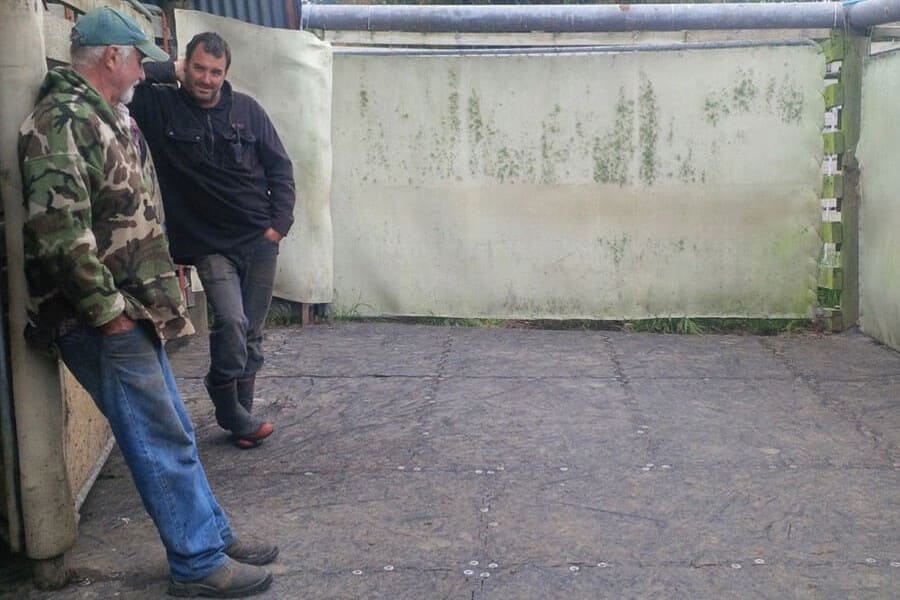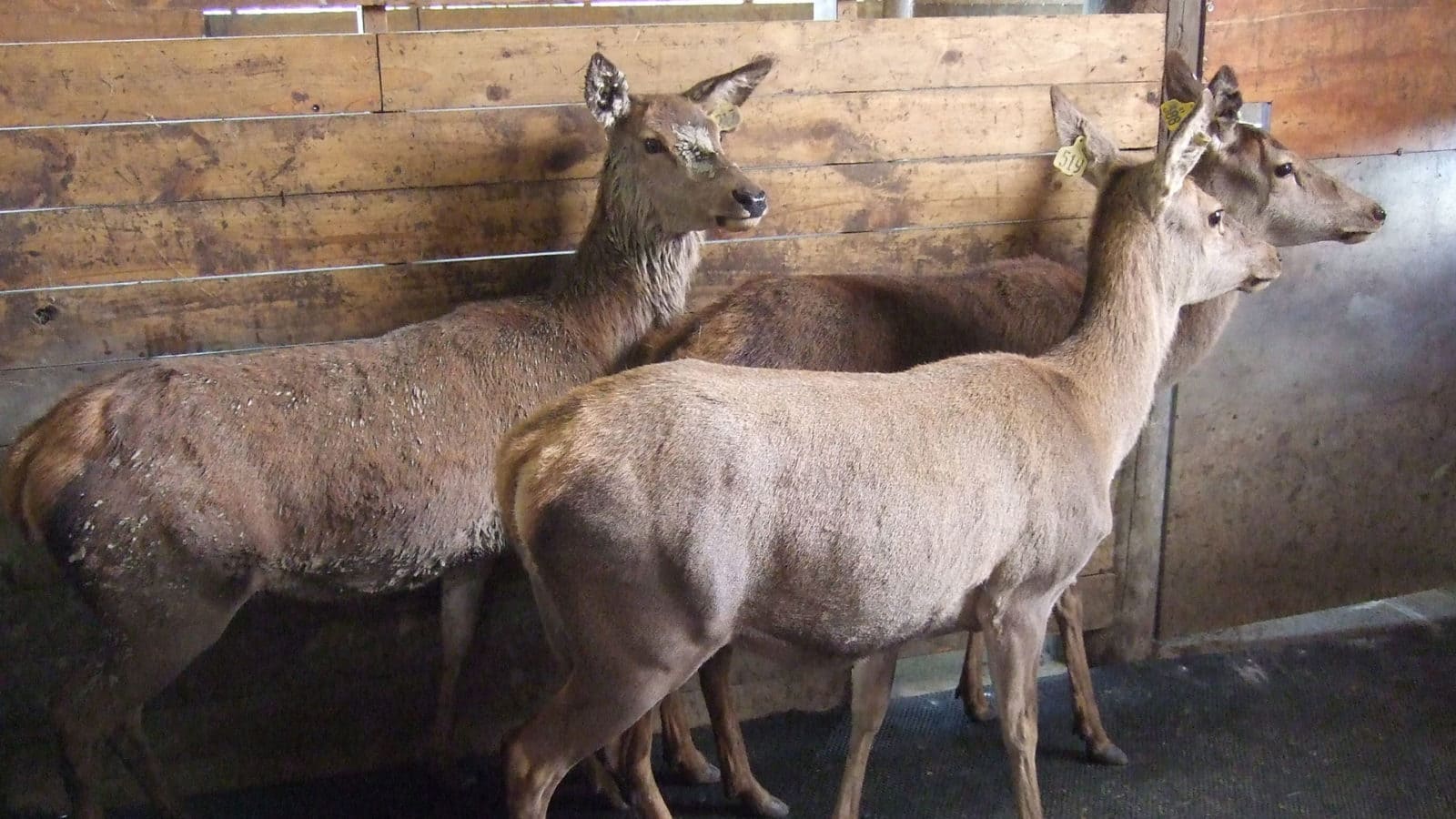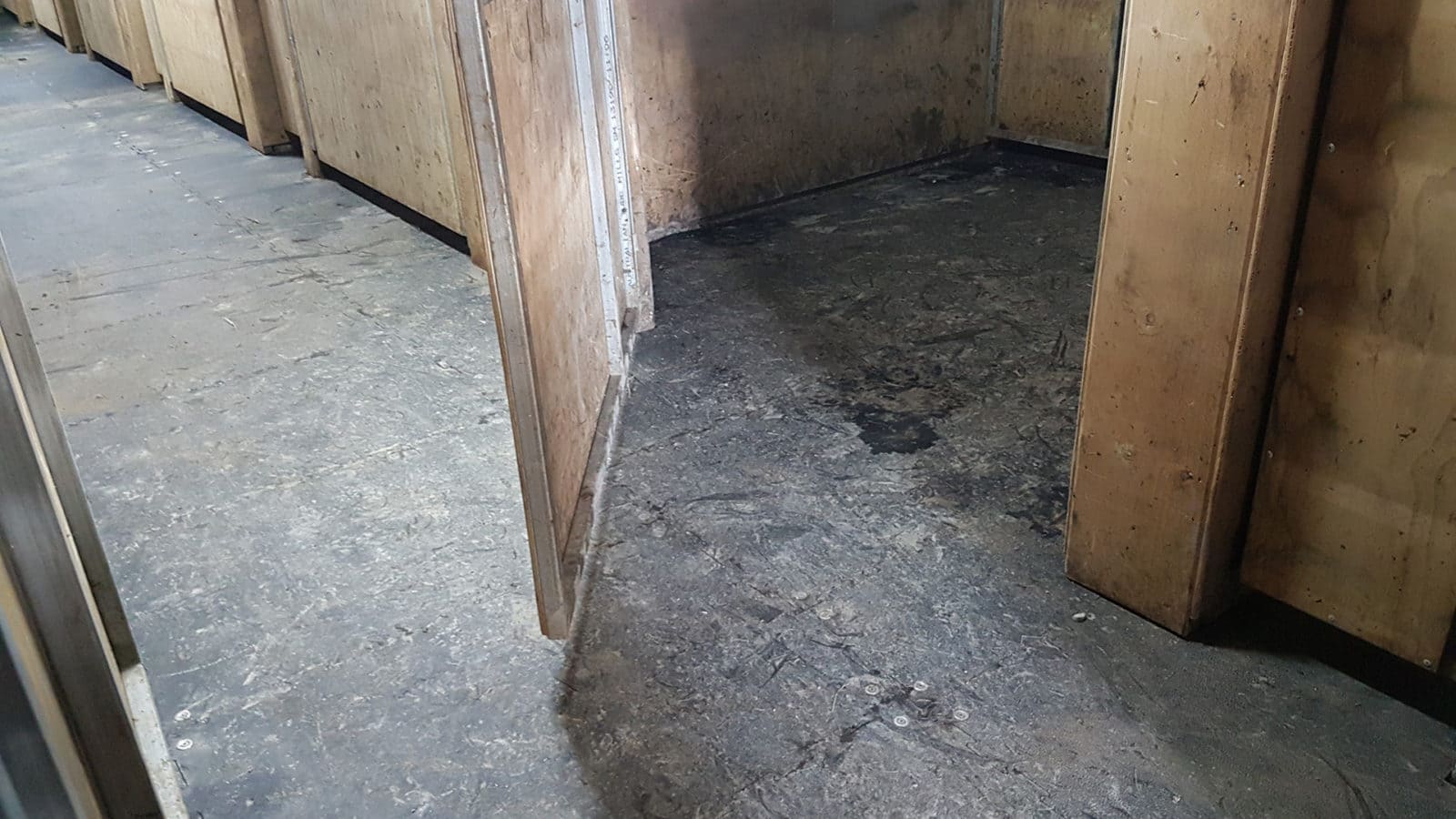Minimizing Stress and Maximizing Returns in the Deer Shed


Anthony Garton
A few years ago, I had a conversation with a deer farmer from Hastings. His name was Warwick Kent and he was running 2500 stags on a 2000-hectare farm in Tikokino and he was having all sorts of trouble with foot infections.
It was a big problem. So big in fact, that he was losing up to 10 animals a year to infection and he didn’t know what to do about it. But he suspected it had something to do with the concrete surfaces in his yards and shed.
You see, when Warwick was bringing his deer into the shed, they were getting stressed. They would come up onto the surface and their feet would make a scratching sound on it and they’d get spooked. This often led to them slipping over or scraping their feet, which in turn led to them getting cuts on their feet. Warwick told me it was through these cuts that they were getting infections.
Now, there’s a micro-organism. It’s called fusiformis. You’re probably familiar with it. It’s part of the deer’s natural gut flora and it’s present in their faeces so it often turns up in mud and soil where they’ve been. Once it gets in a cut and into their bloodstream it’s very hard to stop and can make your deer very very sick. They often die if it’s not treated early enough.
Fusiformis was a big problem for Warwick – and he hoped that rubber matting would help solve it.
Now, skip forward two years. Warwick says he hardly ever gets lame deer. He might see a case of fusiformis maybe once a year. Not only that, his deer are calmer, more rested, and easier to handle.
How did he solve his problem? You guessed it – we helped him identify the problem surfaces on his farm and we put down some rubber matting.
So why am I telling you this story?
I’m telling you this because my objective with this article is to highlight how stress, in and around the shed, can lead to an increase in infection and a decrease in your farm’s productivity. Later, I’m going to tell you a few things you can do that can greatly reduce stress for your animals, and more importantly – how you can reduce stress for yourself.
So, I want to talk a little bit about stress in deer. What do we mean by stress in relation to deer?
The two main types of stress in deer

- The first type of stress is the natural physiological stress you see in response to natural stimuli and cycles – for example: stags becoming more aggressive during rutting season or animals running away from predators. There’s a natural amount of stress that comes along in response to these things that helps the animal to survive and mate. The stress that comes from these situations could be thought of as ‘good stress’.
- The type of stress is a more negative form of stress and it comes from things in the farming environment. These include things like: yarding, transport, unfamiliar humans or dogs, regrouping, weaning, and bad weather. When these stressors are present and persistent for long periods of time, and deer can’t get away from them, it can produce chronic stress which negatively impacts growth, reproduction, immunity, and a whole host of other things. You could call this ‘bad stress’.
The good news is, there’s a lot you can do to reduce bad stress which will maximise your returns.
So, let’s have a look at those now.
What can you do to reduce bad stress?
- You can reduce stressors. For example:
- If it’s a perceived threat, a farm dog acting aggressively on an ongoing basis, consider moving the dog.
- If it’s a conflict between individuals in your mob, consider mobbing individuals differently.
- If it’s unfamiliar people, consider limiting people numbers and reviewing handling practices.
- You can also ensure your deer are calm and well cared for by ensuring they are getting good nutrition:
- A hungry animal is a stressed animal and making sure your deer are properly fed goes a long way to ensure they are settled and healthy.
- Lastly, and the thing I’m going to discuss further in this article – you can provide protective matting in high-stress areas.
So, where are the high-stress areas on your farm?
- Yards
- Races
- Crush
- Truck Pens
Any area where deer are packed tightly together, where they may be getting pushed around, or where they may scare or become reactive would be counted as a high-stress area… these and any area surfaced with CONCRETE!

The cold hard truth about concrete!
Repeat after me, “concrete is not my friend!”
Good. You need to embrace this fact if you are going to overcome your deer foot problems.
But why is concrete such a problem? It’s because it creates a negative cycle:
- Deer become stressed on concrete and are easily spooked
- Deer skid on the abrasive concrete surface which grinds and damages their feet
- Porous concrete harbours bacteria which infect the deer’s damaged feet
Fortunately, rubber surfacing does the exact opposite. It creates a positive cycle:
- Deer are comfortable, quiet and relaxed on rubber matting and less likely to get ‘spooked’.
- Calm deer are less likely to skid on of rubber. If they do, there’s no abrasion. No foot damage.
- Vulcanised rubber is non-porous. So, it doesn’t hold bacteria. Meaning, even if your deer do have cuts on their feet, they are far less likely to pick up an infection while standing on rubber.
7 benefits of rubber matting
- Protects deer feet from sharp objects or grating surfaces like concrete
- Protects underlying surfaces from deteriorating
- Calming effect. Softness underfoot leads to calmer deer that are easier to manage
- In transport pens deer will lay on rubber and they don’t get muscle bruising (important for venison quality)
- Easier to clean than concrete, non- porous
- Can be installed on floors and walls
- Joins can be sealed for extra protection

What types of rubber mats work best?
Talk to one of our knowledgeable consultants about the various Numat products recommended for deer sheds and walkways. Call us on 0800 686 119.